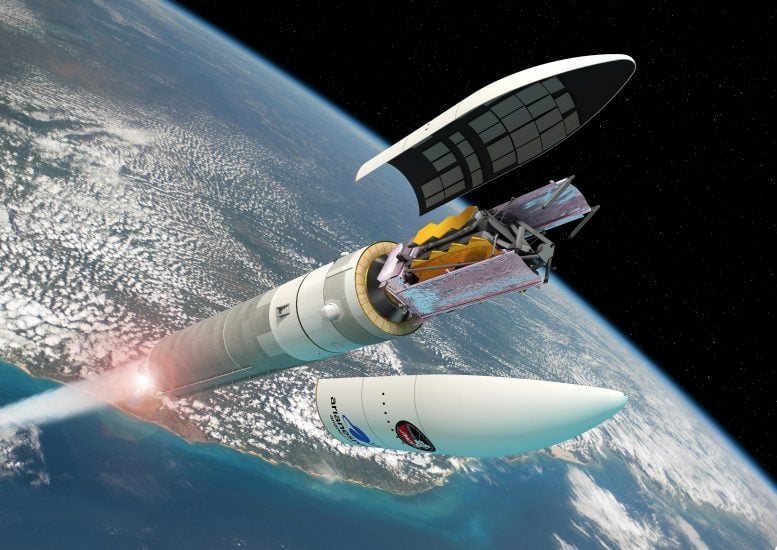
Artist’s impression of the James Webb Space Telescope (Webb), folded in the Ariane 5 rocket during launch from Europe’s Spaceport in French Guiana. Credit: ESA – D. Ducros
The international James Webb Space Telescope has passed the final mission analysis review for its launch on an Ariane 5 rocket from Europe’s Spaceport in French Guiana.
This major milestone, carried out with Arianespace, the Webb launch service provider, confirms that Ariane 5, the Webb spacecraft, and the flight plan are set for launch. It also specifically provides the final confirmation that all aspects of the launch vehicle and spacecraft are fully compatible.
During launch, the spacecraft experiences a range of mechanical forces, vibrations, temperature changes, and electromagnetic radiation. All technical evaluations performed by Arianespace on the mission’s key aspects, including the launch trajectory and payload separation, have shown positive results.
“We are thrilled to have passed this important step towards the launch of Webb and to have received the green light from Arianespace and NASA,” says Peter Rumler, ESA Webb project manager.
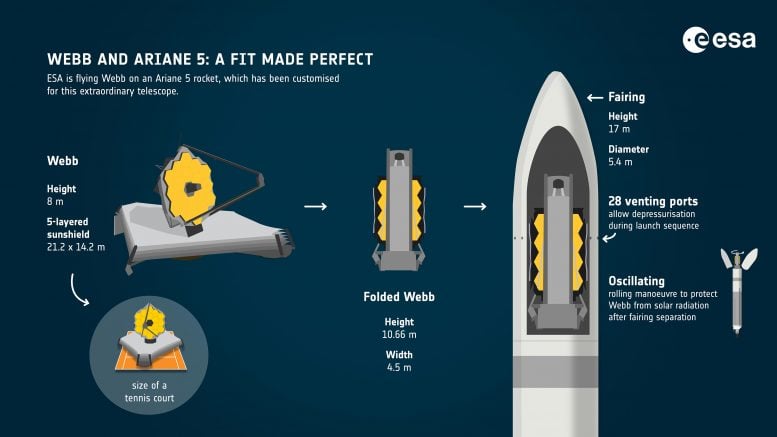
Webb and Ariane 5: a fit made perfect. Ariane 5 has been customized to accommodate all the specific requirements of the Webb mission. New hardware ensures that venting ports around the base of the fairing remain fully open. This will minimize the shock of depressurization when the fairing jettisons away from the launch vehicle. Some elements of Webb are sensitive to radiation from the Sun and heating by the atmosphere. To protect it after the fairing is jettisoned, Ariane 5 will perform a specially developed rolling maneuver to avoid any fixed position of the telescope relative to the Sun. Additionally, an extra battery is installed on Ariane 5 to allow a boost to the upper stage after release of the telescope, distancing it from Webb. Credit: ESA
Webb will be the largest, most powerful telescope ever launched into space. As part of an international collaboration agreement, ESA is providing the observatory’s launch service using the Ariane 5 launch vehicle. Working with partners, ESA was responsible for the development and qualification of Ariane 5 adaptations for the Webb mission and for the procurement of the launch service.
Ariane 5 will deliver the telescope directly into a precision transfer orbit towards its destination, the second Lagrange point (L2). After separation from the launcher, Webb will continue its four-week long journey to L2 alone. L2 is four times farther away than the Moon, 1.5 million km from Earth in the direction away from the Sun.
Mission analysis experts at ESA helped to compute the launch window, a complex issue because it involves ensuring that Webb can be inserted into its target orbit and at the same time the Ariane 5 upper stage will safely escape from Earth.
The telescope will observe the Universe in the near-infrared and mid-infrared – at wavelengths longer than visible light. To do so, it carries a suite of state-of-the-art cameras, spectrographs, and coronagraphs.
ESA plays a crucial role in the Webb mission. Aside from procuring the Ariane 5 launcher and launch services, ESA is contributing the NIRSpec instrument and a 50% share of the MIRI instrument, as well as personnel to support mission operations.
Webb is an international partnership between NASA, ESA, and the Canadian Space Agency (CSA). Webb’s partners are working towards the launch readiness date of October 31, 2021. The precise launch date following 31 October depends on the spaceport’s launch schedule and will be finalized closer to the launch readiness date.


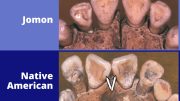

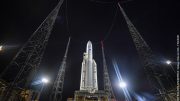
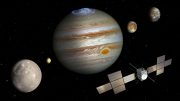


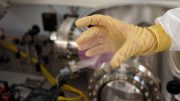
Mark my words…The addition of a tiny satellite to witness the unfolding (and perhaps offer a bump or nudge) would be a wise addition to the launch package. Without this, if there is a problem, nobody will ever find out what happened.
@Eric M. Jones, 100% agree. I don’t know if there is any surplus payload weight capacity on this mission, but if the illustration provided in this story is accurate, there does appear to be surplus volume within the payload fairing; enough space for a small satellite to “ride shotgun” with Webb.